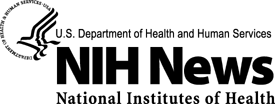|
Study of Hygiene in Inner-City Households Identifies What Helps and What May Not
Doing laundry using hot water and bleach may prevent infections
in the home, while drinking only bottled water may promote infections,
according to research funded by the National Institute of Nursing
Research (NINR) at the National Institutes of Health that looked
at ways to predict infectious disease symptoms in inner city households.
The study, "Predictors of Infectious Disease Symptoms in Inner
City Households," was led by Elaine Larson, PhD, RN, Associate
Dean for Research at the School of Nursing, Columbia University,
and appears in the May/June issue of the journal Nursing Research.
"This study may be the first to look at hygiene in the home,"
said Dr. Larson, "although research has been done in institutional
settings such as nursing homes and day care centers. What is important
is to identify which choices and habits actually help prevent disease,
and which may either make no difference or actually promote disease."
Use of hot water for white laundry was found to be protective by
reducing disease risk by about 30 percent. Bleach was also protective.
Those who reported using bleach at the beginning of the study had
about one-fourth the infection rate of those who did not. Other
studies show that most washing machines are set at temperatures
between 78- 140 degrees Fahrenheit. This study indicates a setting
between 178-194 degrees Fahrenheit helps reduce risk of infections.
One reason households avoid bleach and use lower temperatures is
the proliferation of synthetic, no-iron fabrics, where label directions
recommend cold or warm temperatures and "no bleach," according
to the investigators.
The findings also showed that drinking only bottled water was associated
with a two-fold risk of infection, although investigators recommend
further study to determine whether the water was contaminated or
whether the cause was more than one member drinking from the same
bottle. The results of a body of studies by other investigators
of bottled water — there are more than 600 brands — have been contradictory.
Patricia A. Grady, PhD, RN, FAAN, Director of the NINR, noted "We
need to know more about our routine household hygiene and cleaning
assumptions in order to be accurate in preventing infections. This
is a key area for further research." To illustrate her point,
Dr. Grady said "Dr. Larson's research found no difference between
products with and without antimicrobial ingredients as far as protection
from disease is concerned. Dr. Larson has suggested that persistent
use of antimicrobials might actually enhance the evolution of drug
resistant bacteria." This study appeared in the March 2004
issue of Annals of Internal Medicine.
To determine the incidence and predictors of infectious disease
symptoms in inner city households, the investigators closely monitored
238 households with almost 1,200 members. Most were Hispanics born
outside the United States and living in large high-rise buildings
in the inner city of northern Manhattan. This population allowed
researchers to study households with more persons per room and to
determine if infection is spread from person to person.
The research team consisted of three bilingual physicians and a
trained community worker. Each household received a weekly phone
call, a monthly visit, and extensive home interviews every quarter
during the 48-week study. A Home Hygiene Assessment Form designed
by the team included questions about food preparation, sharing towels
and toothbrushes and beliefs about germs. Also covered were questions
about incidence and type of infections experienced by household
members. Responses ranged from fever and skin boils to diarrhea,
vomiting and sore throat.
The National Institute of Nursing Research, NIH, is part of
the US Department of Health and Human Services. For more information
about NINR, visit the website at http://ninr.nih.gov/ninr/.
| 
